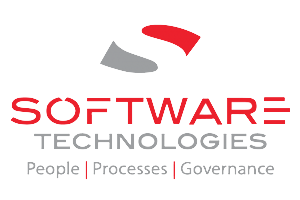Kenya Bureau of Standards (KEBS) team in admin and ICT was recently trained on using eHorizon eBoard, a board portal for preparing board and committee meetings whilst monitoring risk and compliance. The training that took place at Software Technologies Ltd offices was facilitated by Head of SAAS Delivery, Jaswinder Gahir. The […]
eHorizon eBoard
Good Governance in the Digital Age
Many directors are feeling outmatched by the ferocity of changing technology, emerging risks, and new competitors. Here are four ways to get boards in the game. Today’s boards are getting the message. They have seen how leading digital players are threatening incumbents, and among the directors we work with, roughly […]
Zamara Annual Retirement Conference
Kenyans are extraordinary marathon & long-distance runners, earning us world recognition as exemplary athletes. This March 2020, Zamara presented the 7th Annual Retirement Conference with their theme being “Running The Retirement Marathon”enlightening delegates on how one can run your retirement race successfully. The Zamara Retirement Conference 2020 offered an array […]
Kenya IT Sector: Innovative Software Solutions by Software Technologies Limited
Interview with Chets Mukherjee, Operations Director at Software Technologies Limited What is your current assessment of the IT sector in Kenya and what do you consider to be the latest trends? The IT sector in Kenya is very diverse. It includes hardware, software, telecoms, etc. Increasingly, we have the fintech space that is taking off. […]
eBoard Powers Boardroom Efficiency for KenGen’s Sustainable Future
The eBoard iPad use is very intuitive and learning to use eHorizon eBoard system is quite easy. Recently, our new Company Secretary was able to capture minutes using the eHorizon eBoard system without any formal training and for the first time; our board meeting minutes were ready immediately after the […]
The Benefits of Board Meeting Technology (eHorizon eBoard) for the CITAM Board
“Moving from email distribution to eHorizon eBoard has brought transparency, security of confidentiality to board information. In addition, our board members experience more organisation and uniformity. We no longer have to bear with Directors asking ‘did you really send the files? Everybody gets whatever is sent in the same format […]
How Digital Technology can Improve Board Meetings for Companies in Kenya
One of the biggest business revolutions in history is happening nowadays: the digital transformation of companies across industries. Digital environments democratize opportunities for both small and large organizations, as they are openly accessible. Organisations have found in innovation a new engine for the road to success. To achieve this goal, […]
eBoard Streamlines NTSA Board Operations for Efficient, Reliable & Safe Road Transport
“We like eBoard because it’s simple for me to create minutes from scratch or start from an existing board pack and have lists of attendees, dates and meeting topics added automatically to the minute’s template. It has made it easy to share documents at the click of a button and […]






